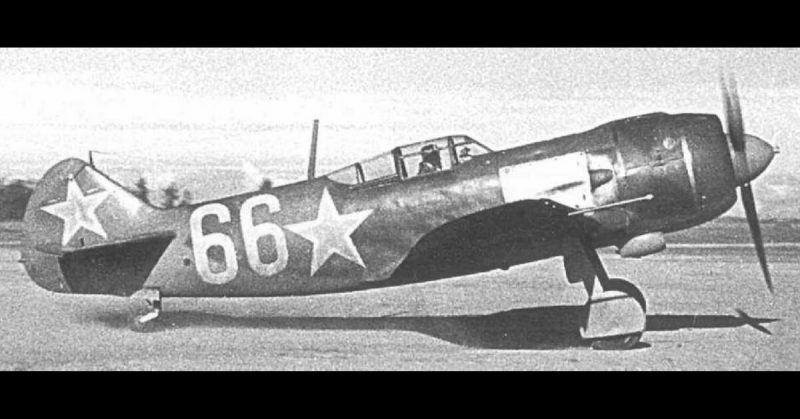Author: Patrick Kinville
In the Summer of 1943, the German Luftwaffe encountered the Soviet Lavochkin La-5 for the first time in large numbers in the skies over the Eastern Front. At first unaware of the capabilities of the new Soviet righter, German pilots dubbed the aircraft the Neue Rata, comparing it to the Polykarpov I-16s that had been heavily involved in the Spanish Civil War in the 1930s and were by this time obsolete. Luftwaffe airmen, however, quickly learned to respect, and even fear, the La-5. It soon became clear that Soviet engineers had finally built an aircraft that could go toe to toe with German Bf-109s and Fw-190s.
One of the VVS’ primary fighters at the time of the German invasion in June of 1941 was the LaGG-3. Designed by Semyon A. Lavochkin, Vladimir P. Gorbunov and Mikhail I. Gudkov in 1940, the LaGG-3 suffered from an acute lack of power with its Klimov M-105PF inline engine that produced 1,260 horsepower. Soviet pilots generally disliked the fighter. “Pilots didn’t like flying the LaGG-3 – a heavy beast with a weak … engine… They got used to it … but we had higher losses in LaGG-3s than in I-16s,” one Soviet airman, Viktor M. Sinaisky, recalled. Indeed, Soviet pilots soon began lamenting that LaGG was actually an acronym for Lakirovannii Garantirovannii Grob– a Varnished Guaranteed Coffin.
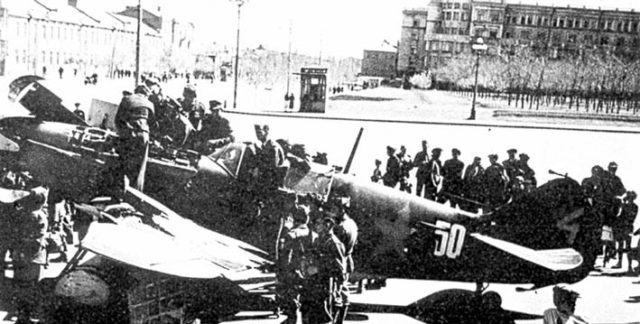
The poor performance of the LaGG-3 in the early months of the war caused Semyon Lavochkin to fall out of favor with the Soviet leadership. In the fall of 1941, factories that had previously been assigned to LaGG-3 production were turned over to building Yakovlev Yak-1s and Yak-7s. In December, Deputy Commissar of Aviation Industry Pyotr Dementyev told Lavochkin, “the storm is coming down on you. Your days are numbered. Now you must take extraordinary steps to completely change the attitude of the military and the government towards the LaGG-3.” Shortly thereafter, Arkadiy Shvetsov suggested using his ASh-82FN (M-82) air-cooled radial engine to add some much-needed power to the LaGG-3. A license-built version of the Wright R-1820 Cyclone radial engine, the 14-cylinder M-82 could produce 1,850 horsepower, a significant improvement over the Klimov M-105PF.
Lavochkin agreed to the proposal, and with the help of Vladimir Gorbunov, went about affixing a radial engine to an airframe that housed an inline engine. Needless to say, this was not a simple task. For one thing, the M-82 was 250 kg heavier than the M-105, meaning that the new engine would affect the aircraft’s center of gravity. Moreover, with a width of 1260mm, the M-82 was much larger than 798mm engine of the LaGG-3. As a solution to these glaring issues, Lavochkin and Gorbunov took the nose section of a Sukhoi Su-2 light bomber, which also housed an M-82, and grafted it to an LaGG-3. While problems still remained, this did the trick of housing attaching a radial engine to the unpopular and underperforming fighter.
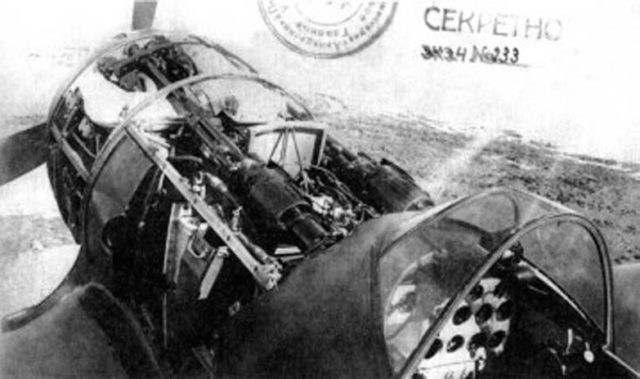
Making its inaugural test flight in March, the designers were extremely pleased with the new fighter’s performance. Indeed, Soviet test pilots declared the new aircraft to be superior to the Yakovlev Yak-7, which was generally well-liked among VVS airmen at the time. In July, Stalin ordered the conversion of any incomplete LaGG-3 airframes to the new configuration house the M-82 radial engines. The new aircraft took on the designation La-5. Further tweaking led to the La-5FN, which became the definitive version of the aircraft that would have such an impact on the war on the Eastern Front.
The La-5 had its first major success at the Battle of Kursk in the summer of 1943. Though Kursk is well-known for being the largest tank battle in history, aircraft on both sides were heavily involved, providing close air support and air coverage for ground troops. La-5s by this time were flown by the 3rd GIAP, 88th GIAP, 31 IAP, 131th IAP (40th GIAP), 239th IAP, 254th IAP, and 272nd IAP. While the Luftwaffe maintained air superiority during the first part of the battle, the Soviet pilots in the La-5s were eventually able to show German airmen that the new plane not only had significant firepower, it had the speed and maneuverability to match the Messerschmitts and Focke-Wulfs. A new Lavochkin in the hands of a skilled Soviet pilot was as deadly as anything on the battlefield. Some such exploits have become legendary. One A.K. Horowitz, for example, is believed to have shot down nine German planes in a La-5 during a single battle, though only six were confirmed (two Ju-87s, two Ju-88s, and two FW-190s). Later that same day, Horowitz was killed in a battle against four enemy fighters. He was posthumously awarded the title Hero of the Soviet Union.
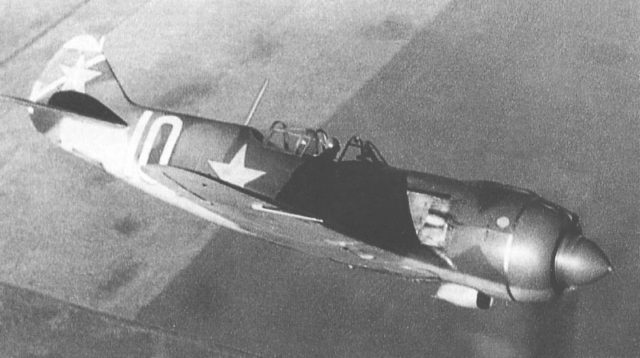
Similarly, in July, in the skies northeast of Kursk, several La-5 pilots shot down two Fw-190s piloted by Major Reinhard Seiler and Lieutenant Hugo Hunerfield of JG 54. Both Luftwaffe pilots were seasoned aces, with Seiler having 102 victories and Hunerfield 28. Both pilots ejected. Hunerfield was captured by Soviet ground forces. Seiler was rescued by German troops and sent back to the Reich for hospital treatment, where he was declared unfit for further combat duties. Such episodes in the skies over Kursk made it clear that the Soviet Union had developed an aircraft after two years of war that could match, and in many ways exceed, the capabilities of German fighters.
That same summer, a new La-5FN made a forced landing on a German airfield, which provided the Luftwaffe with a chance to examine and test-fly the VVS’ new fighter, and the results were sobering. The aircraft was sent to Germany to undergo extensive testing at the Luftwaffe Research Center in Rechlin. German test pilot Hans-Werner Lerche wrote a detailed report of his experiences flying the La-5FN, explaining that the new Soviet fighter excelled at altitudes below 3,000 meters, and its performance at this altitude was comparable to Luftwaffe fighters. He also noted that the new Lavochkin possessed superior maneuverability in some regards. Both German fighters, however, outperformed the La-5FN at higher altitudes, though given the fact that the majority of the air war over the Eastern Front was fought below 3,000 meters, this was often not a problem.
Lerche also discovered numerous drawbacks with the new Lavochkin, though these defects would be eradicated by Soviet engineers in what would become the La-5’s successor, the La-7. For example, all engine controls in the La-5FN’s cockpit had separate control levers, meaning the pilot had to make constant adjustments during the flight. In contrast, contemporary German fighters had integrated controls, so only one lever was needed to control throttle, mixture, propeller pitch, radiator and cowl flaps. In addition, the German test pilot noted that the aircraft suffered from a short flight time- only about 40 minutes at cruise engine power. Despite these shortcoming, however, Lerche acknowledged that the La-5FN was a significant improvement over the Soviet fighters that had gone up against Luftwaffe pilots earlier in the war.
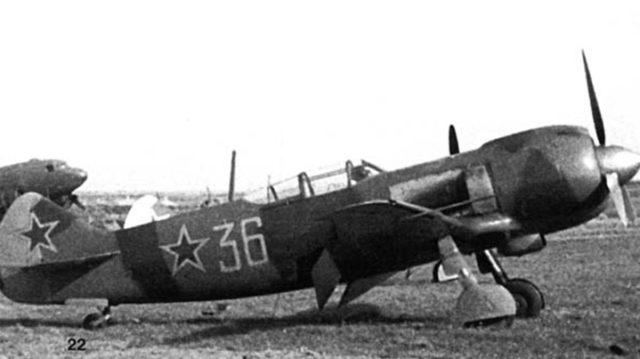
Following the successful develop of the La-5, the Soviet industrial machine, which had recently recovered after being moved eastward away from the German advance in 1941 and 1942, produced a total of 5,048 of the new Lavochkins in 1943, the majority of which were manufactured at the Sokol Aircraft-Building Plant in Nizhny Novgorod. A further 3,826 were built in 1944, though the number decreased when the upgraded La-7 went into production in April. Production switched completely to the La-7 in November.
Up against the German Luftwaffe, the La-5FN was as deadly as any other aircraft on the Eastern Front. The Soviet Union’s top ace, Ivan Kozhedub, scored the majority of his 64 victories flying his La-5FN. Following their introduction, the Lavochkins made a significant contribution to the VVS gaining air superiority over the Eastern Front. From Kursk all the way to Berlin, the La-5 played a crucial role in the last two years of the war. The Lavochkin La-5, as much as anything, is symbol of the Soviet Union’s industrial and military recovery in 1943. The momentum would take the Red Army and VVS all the way to Berlin in 1945.
Author: Patrick Kinville
All Pictures provided by the author
